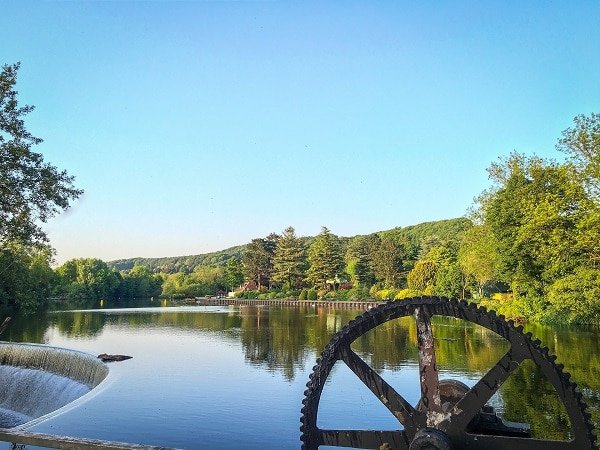
This month marks the 70th anniversary of the Peak District, the first of the National Parks of Great Britain. We’re showcasing some of the highlights, uncovering a few of those special places, and sharing tips on when to visit, where to stay, etc. So let’s take a look at the Peak District.

The Peak District was the first of the UK’s National Parks, gaining the status in 1951. It covers an area of 555 square miles that stretches across parts of Derbyshire, Yorkshire, Cheshire, and Staffordshire. Given its central location and ease of access from nearby cities such as Manchester and Sheffield, it attracts more than 10 million visitors a year.

There are four visitor centres in the national park–Bakewell, Derwent, Edale, and Castleton. They are a great place to plan your day, get directions, making hotel bookings, and just learn a little more about the area.
What to do.
There are lots of things to do within the national park boundaries, from cycling to horse riding. Some of the walking trails are suitable for wheelchairs and buggies. Guided walks are also available. These are led by a park ranger and give you the opportunity to learn about the wildlife as you walk. More information about guided walks can be found at the visitor centres or on the park website. For more experienced walkers, the 55 mile Derwent Valley Heritage Way is a World Heritage Site. The Limestone Way covers 46 miles. Or for the truly ambitious, the Pennine Way National Trail starts in Edale, traversing 268 miles to Kirk Yetholm, just across the Scottish border.
What to see.
There are wonderful views for the photographer or sightseer throughout the Peak District. Those wanting to enjoy some historical architecture might like Chatsworth House or Haddon Hall, both near Bakewell. To learn more about the area’s role in the industrialisation of Britain, visit the Peak District Lead Mining Museum or take a ride on a restored steam train on the Peak Rail. Or why not just enjoy the scenery out on the trails, before stopping off at a tea room in Bakewell for a slice of Bakewell Tart.

Avoid the crowds.
Despite the number of visitors to the park each year, you can still find peaceful areas away from the crowds. But don’t expect much peace and quiet if you go on a Bank Holiday weekend!
One suggestion for a less crowded area is the Monsal Trail, a former railway line between Buxton and Bakewell. Be warned though that others have mentioned it being quite busy when they went so, as with any advice, your mileage may vary.
Perhaps the best tip is to plan ahead and arrive early. Get in and out of the visitor centre before the bus tours and groups start to arrive. Then by lunchtime, you can have staked out a more remote spot.
Where to stay.
Camp sites are available at several locations through the park. Be warned, though, that wild camping is not permitted.
Whatever your accommodation preference–hotel, bed and breakfast, or self-catering–you will find a huge range of options to suit a variety of budgets. Our sidebar includes several affiliate links to hotel chains and cottages within the area.




We cycled along the Monsal Trail in September this year, renting bikes at the old station at Hassop. There were a few other people out hiking and cycling but overall it was fairly quiet on a mid-week day. The trail itself is relatively flat, with a few gentle slopes – sort of what you would expect from an old railway.
The bicycle rental place has over 100 bikes and said that on busy weekends, all their bikes are out for hire.